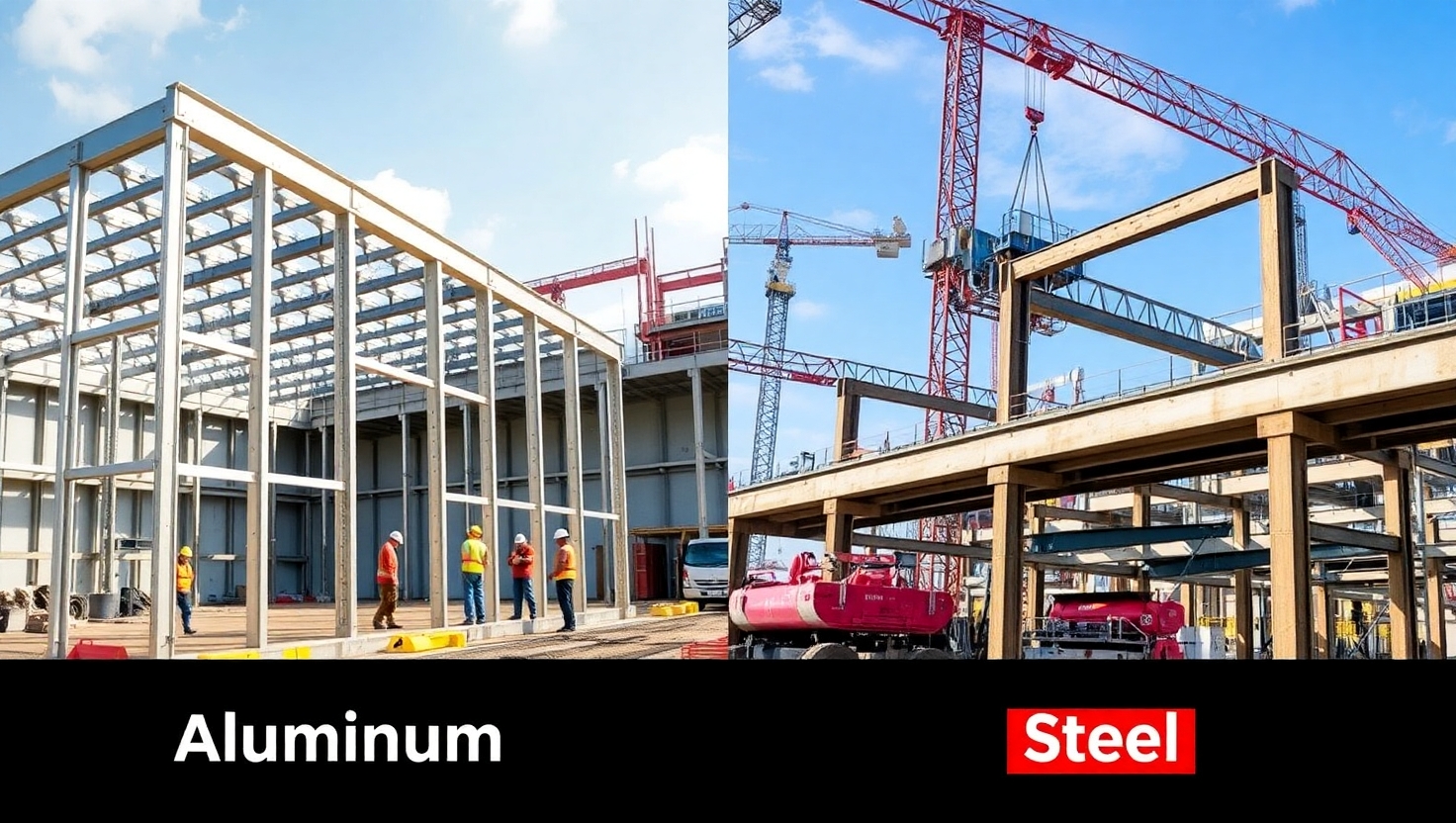Aluminium vs Steel – Which is Better for Construction?
Published by: ALUTimes | Date: July 7, 2025
Introduction
When it comes to modern construction, both aluminium and steel are essential materials. From skyscrapers and bridges to windows and roofing, choosing between the two depends on several factors. In this article, ALUTimes compares aluminium vs steel for construction in 2025 based on strength, weight, cost, durability, applications, and sustainability to help you make the best decision.
1. Strength and Structural Integrity
Steel is typically stronger than aluminium when it comes to tensile strength and load-bearing capacity. This makes steel a common choice for structural frameworks and heavy-duty applications like skyscrapers and bridges.
However, aluminium offers a high strength-to-weight ratio, making it ideal where weight-saving is critical, such as in roofing systems, curtain walls, and high-rise façades.
2. Weight and Ease of Handling
Aluminium is about one-third the weight of steel, which makes it easier to transport, handle, and install. This lightweight nature leads to faster construction times and reduced labor costs.
Steel, while heavier, offers unmatched rigidity in certain structural applications where strength per unit volume is crucial.
3. Cost Comparison in 2025
In general, steel is cheaper per kilogram than aluminium. However, the total cost in a construction project may not always favor steel, since aluminium reduces transportation, installation, and maintenance expenses.
2025 Update: Due to rising energy and carbon costs, aluminium prices have stabilized while recycled aluminium is more available and affordable in India.
4. Corrosion Resistance and Longevity
Aluminium naturally forms an oxide layer that resists corrosion, especially in humid, coastal, or chemically exposed environments. Steel often requires galvanizing, painting, or other coatings to prevent rust.
For long-term durability in exposed environments, aluminium is the better option with less ongoing maintenance.
5. Sustainability and Recycling
Both materials are recyclable, but aluminium stands out as it can be recycled indefinitely without losing quality. It requires only 5% of the energy to recycle compared to producing primary aluminium.
With India pushing green infrastructure in 2025, aluminium is being prioritized in government and LEED-certified construction projects.
6. Applications in Modern Construction
- Aluminium: Windows, doors, façades, roofing panels, modular structures, solar panel frames
- Steel: Columns, beams, rebar, foundations, bridges, heavy-load structures
7. Fire Resistance
Steel has a higher melting point (~1425°C) compared to aluminium (~660°C), making it more resistant in fire-prone areas. However, aluminium can be treated with fire-retardant coatings for architectural applications.
8. Design Flexibility
Aluminium is easier to shape and extrude into complex profiles. Architects prefer aluminium for modern, aesthetic designs in commercial and residential projects.
9. Construction Trends in India – 2025
With the government’s continued focus on infrastructure development and sustainable construction, aluminium is gaining ground, especially in smart city projects and modular housing.
However, steel remains irreplaceable in large-scale structural projects due to its raw strength and economy of scale.
Which is Better for You?
Choose aluminium if: Your project involves design flexibility, corrosion resistance, or lightweight materials.
Choose steel if: Your structure requires very high strength, fire safety, and cost-efficiency on large volumes.
Conclusion
Both aluminium and steel have unique strengths in construction. The right choice depends on your project goals, budget, environment, and performance expectations. In 2025, more builders are opting for aluminium due to its environmental benefits and efficiency — but steel still dominates large-scale structural needs.
Disclaimer
This content is for informational purposes only. Please consult material experts or architects before making design or procurement decisions. ALUTimes does not take responsibility for project-specific outcomes based on this article.

